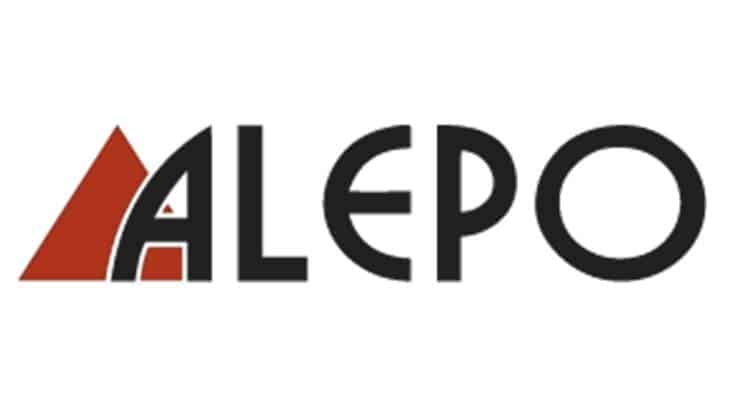By Danielle Russell,
Marketing Director,
Alepo Technologies.
January is almost over, and if it is any indication of what’s in store for 2015, it’s going to be a wild year. Like the Wild West, pioneering service providers will take infrastructure to the cloud and data monetization to new, uncharted territories. Beyond our wildest imaginations, the Internet of Things will hurdle us further towards a hyper-connected digital life in our homes, automobiles, wearables, and beyond. Wi-Fi – a tenacious force – will continue to spread like wild fire, with mobile operators racing to expand their footprints. And, let’s not forget that Barcelona will play host to some wild parties next month during Mobile World Congress 2015. Here are five trends that we think will shape this wild year.
#1: SERVICE PROVIDERS WILL BE FORCED TO REDEFINE THE CUSTOMER EXPERIENCE
Compared to other industries, communications service providers often rank highly, sometimes #1, in one telltale poll – poor customer service. In September, Time called out both fixed and wireless service providers in the U.S. as top candidates for a customer service makeover. Faced with mounting pressure from new market entrants (especially in LTE and Wi-Fi) and over-the-top ecosystem players, service providers will be forced to redefine the entire customer experience – from acquisition to delivery to support – in 2015 and beyond.
To do so, service providers will continue to use constant feedback, real-time customer interactions, and analytics in order to enhance the customer experience and to make it one that is more seamless, contextual, and personal than ever before. Already, we’re seeing examples from leading operators like T-Mobile, which recently launched a data rollover promotion at the overwhelming request of customers on Twitter. Service providers that can deliver experiences rather than bandwidth will stand to make the greatest gains and emerge leaders in customer satisfaction and loyalty.
Danielle Russell,
Marketing Director,
Alepo Technologies

#2: POLICY AND CHARGING CONTROL (PCC) WILL DRIVE BUSINESS INNOVATION AND REVENUES
The ability to monetize data services and to bring new offers to market without hesitation is dependent on the capabilities of the policy and charging core. As service providers look to launch and to monetize new services like VoLTE, over-the-top applications, and international data roaming, the role of the PCC as a profit and service innovation center will continue to grow.
Policy and charging control in the core network touches all areas of the service provider ecosystem, including IT and CRM systems. As new revenue models and business values are defined, service providers will begin to employ multiple PCC solutions, rather than rely on a single solution that can support all use cases, present and future.
#3: DEVELOPING MARKETS WILL BENEFIT FROM LEANER, FASTER LTE DEPLOYMENTS
There is no dispute that LTE penetration and adoption will continue to rise worldwide over the next five years. In 2015, CSPs and technology providers will continue to see a steady pace of LTE rollouts in developing markets throughout Asia, the Middle East, and Africa. New LTE market entrants and evolving mobile operators alike will benefit significantly from the maturation of LTE technologies, proven and tested solutions, and considerable interoperability testing already completed by the leading technology providers. Thus, we’ll see end-to-end LTE deployments completed in a matter of weeks, not months, and in much more cost-effective and reliable way.
“LTE in a Box” solutions will enable service providers to launch and monetize their networks immediately, while maintaining the flexibility and openness to enhance and modify them as needed. The promise of rapid ROI on LTE networks will increase competitive pricing and demand further business innovation from the most agile service providers.
#4: WI-FI WILL PROVE TO BE TENACIOUS, RESILIENT, AND CENTRAL TO MNO STRATEGY
Mobile carriers have recently become more aggressive in their Wi-Fi strategies and will invest in expanding their footprints and penning partnerships with other Wi-Fi providers throughout 2015. Meanwhile, cable and fixed service providers will also continue to expand and strengthen their Wi-Fi offerings. Both will look for new ways to generate new revenue streams over Wi-Fi, especially as Wi-Fi calling and international roaming increase in popularity. Wi-Fi roaming, Wi-Fi offload, and Wi-Fi hotspot business models will be central to mobile providers’ Wi-Fi strategy, and I think we have barely begun to see the full extent of disruptive Wi-Fi opportunities and business models that will reshape the industry over the next few years.
#5: NETWORK TRANSFORMATIONS WILL PUT TO REST OUTDATED, MACGYVER’ED PCC SOLUTIONS
This may seem like an obvious prediction, but many communications service providers’ legacy PCC solutions are at the end of life or soon approaching it. Throughout the year, we will see a significant number of service providers say goodbye to homegrown or patchwork PCC solutions that are too small to handle subscriber growth or can no longer be updated or patched to support the advanced requirements of today’s complex network and business environments.
Thus, in 2015, service providers will massively transform their core networks – specifically their policy and charging core - in order to gain higher performance, advanced features and security, and to support growth in subscriber numbers. A few of these deployments will be partially or fully virtualized.
About The Author:
Danielle Russell joined Alepo in 2010 and currently serves as the Director of Marketing for the global technology provider. In her position, Danielle connects the dots between Alepo's software solutions and the business value they deliver to Alepo's diverse, global customer base. She closely watches trends and opportunities in next generation data monetization, service innovation, and the customer experience. Danielle has over 10 years of diverse experience in science communication, ranging from broadcast journalism to web design to public speaking. She earned a B.S. in Life Sciences Communication from the University of Wisconsin-Madison.



 ONE-CLICK TWEET
ONE-CLICK TWEET
















